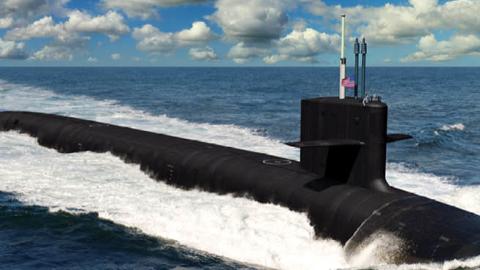Executive Summary
The United States is planning to modernize its strategic nuclear deterrent for the first time since the Cold War ended over thirty years ago. The deterrent comprises three main components, or “legs”: land-based intercontinental ballistic missiles (ICBMs), distributed in hardened silos throughout the northern Midwest; fleet ballistic missile submarines (SSBNs) operating from two bases, one on each coast; and long-range bombers positioned at three air bases in the continental United States. These three legs are known collectively as the triad.
This study analyzes the United States’ plans for modernizing the land, sea and airborne legs comprising its strategic nuclear force triad. This force has been charged primarily with deterring a nuclear attack on the United States, its allies, and security partners (“extended deterrence”), and mitigating the consequences should deterrence fail.
Revisionist great powers China and Russia are both fully engaged in modernizing and, in China’s case, expanding their nuclear triads. Another hostile nuclear state, North Korea, continues expanding its nuclear arsenal, as does Pakistan, whose nuclear program continues receiving support from its long-term sponsor, Beijing. By comparison, the United States has barely moved from the starting gate, as its modernization effort is in its early stages and will not be completed until the mid- to late-2030s, and only then if all goes as planned.
When the US triad of land-based intercontinental ballistic missiles, ballistic missile submarines, and long-range heavy bombers was formed three score years ago, it was as much the result of accident than design. The result, however, has been serendipitous, as each leg has strengths that offset the weaknesses of one or both of its sister components. Simply put, the combined deterrent effect of the triad is greater than the sum of its individual components.
Each leg of the existing triad is rapidly reaching its “expiration date.” The land-based Minuteman III ICBMs were fielded roughly half a century ago, and America’s B-52 bombers predate the Minutemen. The Ohio-Class boats comprising the SSBN force were built roughly forty years ago and will need to be retired later this decade. Options for extending the life of each of these systems at less cost than replacing them have been exhausted.
The Defense Department’s plan calls for replacing the 400 Minuteman III missiles with an equal number of Ground-Based Strategic Deterrent missiles; replacing the 14 Ohio-class SSBNs with 12 Columbia-class boats; retiring the aging B-1 and B-2 bombers and replacing them with 100 or more B-21 bombers; upgrading the B-52 bomber’s air-launched cruise missiles with modern long-range standoff versions; and overhauling its nuclear command, control and communications systems.
Despite the ongoing modernization and expansion of rival state nuclear arsenals and the success the US triad has had in deterring nuclear war, the modernization effort has attracted criticism from some quarters, especially from those in the arms control community. Their ranks have been boosted by support from some current and former senior policymakers. Many express concerns that the modernization’s price tag of $264 billion for the land-based version, and as much as $1.5 trillion overall during these systems’ life spans, places an excessive burden on defense spending in particular, and the Federal budget in general. Alarms have been raised over the risk that modernization will reduce crisis stability, thereby compromising deterrence. Skeptics also assert that the United States can achieve the triad’s traditional objectives equally well by moving to a dyad of submarines and bombers. Some believe that if the ICBM force must be maintained, it should be done by extending the life of the existing Minuteman force, not replacing it. Many critics assert that moving forward with modernization risks triggering an arms race.
This assessment finds the critics’ arguments opposing triad modernization generally unpersuasive.
Arms Race
If there is an arms race, the United States has barely moved off the starting line. Russia and China are well along in modernizing their triads, while the Chinese are expanding theirs as well. Rather than pacing an arms race, the United States is in the position of playing catch up.
Cost and Cost Imposition
The program’s cost is not trivial, but neither is it extravagant. The modernization effort will consume less than 4 percent of the defense budget at its highest point in the late 2020s and early 2030s. Overall, the Defense Department projects it will spend less than 10 percent of its budget annually on operating, sustaining, and modernizing the country’s nuclear deterrent.
Critics of the program’s cost tend to ignore the fact that a good strategy imposes disproportionate costs on rivals, making them less willing to pursue the competition, or to do so at a significant disadvantage. The triad modernization program’s land-based missile force and long-range bomber fleet act to impose costs on both China and Russia. The GBSD force does this by presenting them with an unfavorable attack weapon exchange ratio of 2:1 or (likely) worse. Defending against the bomber force requires enemies to expend resources as much as an order-of-magnitude greater than those required to field and maintain the bombers—and generally without success.
Crisis Stability
Concerns relating to crisis stability center primarily around fears that the ICBMs will be forced to assume a hair-trigger launch posture. This stems from their fixed locations, which are well known to enemies, and their short attack warning time—perhaps 20 minutes or so before the incoming enemy warheads arrive. Hence the assumption that these missiles must be launched on warning of an attack, requiring them to be on high alert, thereby increasing the risk of an accidental or unauthorized launch. This, however, misses the point regarding the land-based deterrent’s principal value: as a deterrent force, not a warfighting force. By imposing disproportionate costs on an attacker, reducing the incentive to attack, thereby enhancing deterrence. In brief, the land-based deterrent’s principal value rests in its ability to deter an attack, rather than being launched in the wake of an attack—in deterring a nuclear war, rather than fighting one. More broadly speaking, the triad’s mutually reinforcing components, where each leg has its unique advantages that offset the shortcomings of the other two, greatly complicates an enemy’s planning and, in so doing, reduces the risk of war.
Cutting Back to a Dyad
Those promoting the concept of eliminating the triad’s land-based leg in favor of a dyad of bombers and submarines have not presented a compelling argument for why the land-based leg detracts from deterrence or that it is prohibitively costly. Nor have they explained how concentrating America’s nuclear “eggs” in a few submarine “baskets” strengthens deterrence. Nor, if the triad’s primary objective is to deter China and Russia, do critics explain why Chinese and Russian leaders believe modernizing their triads is important to ensure they possess a robust deterrent.
The SSBN leg of the triad is currently the most survivable, at least those submarines on patrol at sea. Yet concentrating the United States nuclear forces in one leg of the triad assumes that in this age of dynamic technological advances, there will be no major advances in undersea detection technology or threats to SSBN command-and-control links.
A Vastly Different Tomorrow?
Many critics’ arguments against modernizing the US nuclear deterrent are rooted in assumptions that the current competitive environment—dominated by the twin US and Russian arsenals that are constrained by New START and populated by a handful of far lesser nuclear powers—will endure and remain in place at the time US triad modernization is completed nearly twenty years hence.
These assumptions are increasingly fanciful. Indeed, it’s far more likely that the strategic nuclear competition will have experienced several disruptive shifts by the mid-2030s.
A Tripolar Nuclear Great Power Rivalry
US policymakers cannot discount the US-Russian bipolar nuclear competition becoming tripolar, with China joining them in the first rank of nuclear powers. Evidence is growing that China is determined not to be a second-class citizen regarding nuclear arms. Exhibit A is its ongoing nuclear modernization and expansion program, which is projected to at least double China’s nuclear arsenal by decade’s end. This would square with China’s developing the DF-41 ICBM, capable of carrying ten warheads, and constructing over 100 new missile silos while fielding a separate road-mobile ICBM force.
If a tripolar great nuclear power regime were to emerge, parity—long a key component of Russian-US arms control agreements—would no longer be possible for each of the three nuclear giants. Correspondingly, establishing and maintaining a US deterrent capable of providing an assured destruction capability against two comparably armed powers would prove challenging. Doing so while preserving today’s level of deterrence seems especially daunting.
Breakout
There exists significant potential for breakout—a relatively rapid and significant shift in the nuclear balance. China is unconstrained by New START and nothing precludes the Chinese from stockpiling missiles or warheads. The large number of missile silos now being constructed in China could house a few missiles, or many. Similarly, the People’s Liberation Army (PLA) could easily expand its mobile launch systems. The Russians have a new ICBM that can accommodate four MIRVs, and another under development that can be armed with ten or more. They also clearly have sufficient fissile material stocks to support a rapid expansion of their arsenal.
Second-Tier Nuclear Powers
If the New START agreement is sustained over time, perhaps even incorporating a Chinese strategic nuclear force, then lesser nuclear powers could be incentivized to expand their arsenals to enhance the value of their geopolitical alignment. If so, the United States could be confronted with establishing an assured destruction capability against Russia and China while having to address the threat posed by second-tier North Korean (and perhaps Pakistani) arsenals were they to align with China.
If the New START regime were to collapse in the wake of a Chinese ascent to great nuclear power status, an arms race could ensue. If so, prospective second-tier nuclear powers would have far less incentive to expand their arsenals to the high triple digits, similar to the British, Chinese, and French Cold War-era forces, since they would exert only an extremely modest influence on the competition among the great nuclear powers.
Multidimensional Strategic Forces
Nor can US policymakers ignore the emergence of multidimensional strategic arsenals, enabled by the growing number of non-nuclear precision-strike forces capable of attacking with confidence a significant number of strategic targets once reserved for nuclear forces. Moreover, as recent events suggest, cyber weapons also have the potential to hold at risk key elements of advanced states’ critical infrastructure. Non-nuclear hypersonic missiles should not be discounted either, which may come to exert a significant influence on the strategic balance.
The Bottom Line
Current circumstances strongly support triad modernization. Likely shifts in the character of the strategic competition—both geopolitical and military technical—serve only to increase the value of proceeding. Indeed, given current trends it would, at the least, seem prudent to hedge against the prospect that some will quite likely play out. If so, the United States’ options for addressing such shifts in the threat environment would be greatly enhanced by maintaining a modern nuclear deterrent sustained by a healthy industrial base.















